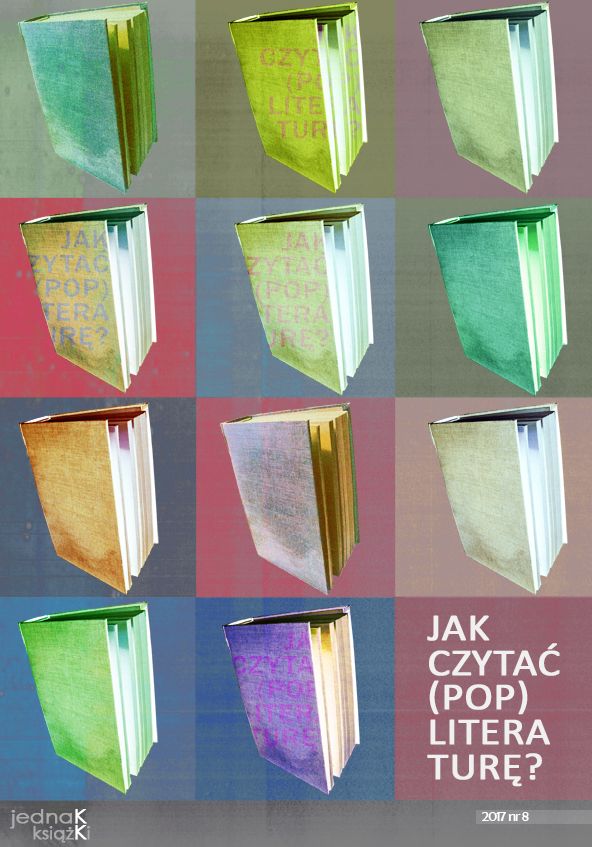Zielona architektura. Jak kształtować środowisko mieszkalne w harmonii z naturą
Słowa kluczowe:
green architecture, ecocriticism, urban studies, ecologyAbstrakt
This article is a review of the book titled Green Architecture by James Wines. The reflection of an American architect is an inspiration to consider how to create a living environment in harmony with nature. On the one hand, the author of this text tries to examine several examples of interaction between architecture, ecology and philosophy. On the other hand, she tries to respond to Wines’s ideas and to point out some questionable aspects of his project.
Downloads
Download data is not yet available.
Bibliografia
Buchanan Peter. 2012. „The Big Rethinking Part 2: Farewell to modernism – and modernity too”. The Architectural Review. Online: https://www.architectural-review.com/rethink/campaigns/the-big-rethink/the-big-rethink-part-2-farewell-to-modernism-and-modernity-too/8625733.article. Data dostępu 12.09.2017.
Buell Lawrence. 1995. The environmental Imagination: Thoreau, Nature Writing and the Formation of American Culture. Harvard University Press.
Czapliński Przemysław. 2017. „Sploty”. Teksty Drugie (1): 9-17.
Graham Wade. 2016. Miasta wyśnione. Siedem wizji urbanistycznych, które kształtują nasz świat. Sak Anna, tłum. Kraków: Karakter.
Kowalewski Adam T. 2005. „Rozwój zrównoważony w procesach modernizacji”. Nauka (1): 123-146.
Leggewie Claus, Walzer Harold. 2012. Koniec świata, jaki znaliśmy. Klimat, przyszłość i szanse demokracji. Buras Piotr, tłum. Warszawa: Wydawnictwo Krytyki Politycznej.
Mehaffy Michael, Salingaros Nikos. 2017. „Dlaczego zielona architektura rzadko zasługuje na tę nazwę”. Łukasz Stępnik, tłum. Rzut (1,2): 6-11.
Rahm Phillippe. 2017. „Forma i funkcja wynikają z klimatu”. Łukasz Stępnik, tłum. Rzut (1,2): 12-17.
Steffen Will i in. 2015. „The trajectory of the Anthropocene. The Great Acceleration”. The Anthropocene Review 2 (1): 81-98.
Tichá Jana. 2013. „Zielona architektura”. Weronika Parfianowicz-Vertun, tłum. Autoportret (3): 56-61.
Wines James. 2008. Zielona architektura. Frankowski Michał, tłum. Warszawa: TASCHEN/TMC Art.
Young James E. 2000. At Memoryʼs Edge: After-Images of the Holocaust in Contemporary Art and Architecture. Yale University Press.
Zawiślak Marta. 2017. „Drugie życie rzeczy”. Rzut (1,2): 38-46.
Buell Lawrence. 1995. The environmental Imagination: Thoreau, Nature Writing and the Formation of American Culture. Harvard University Press.
Czapliński Przemysław. 2017. „Sploty”. Teksty Drugie (1): 9-17.
Graham Wade. 2016. Miasta wyśnione. Siedem wizji urbanistycznych, które kształtują nasz świat. Sak Anna, tłum. Kraków: Karakter.
Kowalewski Adam T. 2005. „Rozwój zrównoważony w procesach modernizacji”. Nauka (1): 123-146.
Leggewie Claus, Walzer Harold. 2012. Koniec świata, jaki znaliśmy. Klimat, przyszłość i szanse demokracji. Buras Piotr, tłum. Warszawa: Wydawnictwo Krytyki Politycznej.
Mehaffy Michael, Salingaros Nikos. 2017. „Dlaczego zielona architektura rzadko zasługuje na tę nazwę”. Łukasz Stępnik, tłum. Rzut (1,2): 6-11.
Rahm Phillippe. 2017. „Forma i funkcja wynikają z klimatu”. Łukasz Stępnik, tłum. Rzut (1,2): 12-17.
Steffen Will i in. 2015. „The trajectory of the Anthropocene. The Great Acceleration”. The Anthropocene Review 2 (1): 81-98.
Tichá Jana. 2013. „Zielona architektura”. Weronika Parfianowicz-Vertun, tłum. Autoportret (3): 56-61.
Wines James. 2008. Zielona architektura. Frankowski Michał, tłum. Warszawa: TASCHEN/TMC Art.
Young James E. 2000. At Memoryʼs Edge: After-Images of the Holocaust in Contemporary Art and Architecture. Yale University Press.
Zawiślak Marta. 2017. „Drugie życie rzeczy”. Rzut (1,2): 38-46.
Pobrania
Opublikowane
2017-10-30
Jak cytować
Korczyńska-Partyka, D. (2017). Zielona architektura. Jak kształtować środowisko mieszkalne w harmonii z naturą. Jednak Książki. Gdańskie Czasopismo Humanistyczne, (8), 243–254. Pobrano z https://czasopisma.bg.ug.edu.pl/index.php/JednakKsiazki/article/view/375
Numer
Dział
Prolegomena

 Uniwersyteckie Czasopisma Naukowe
Uniwersyteckie Czasopisma Naukowe




